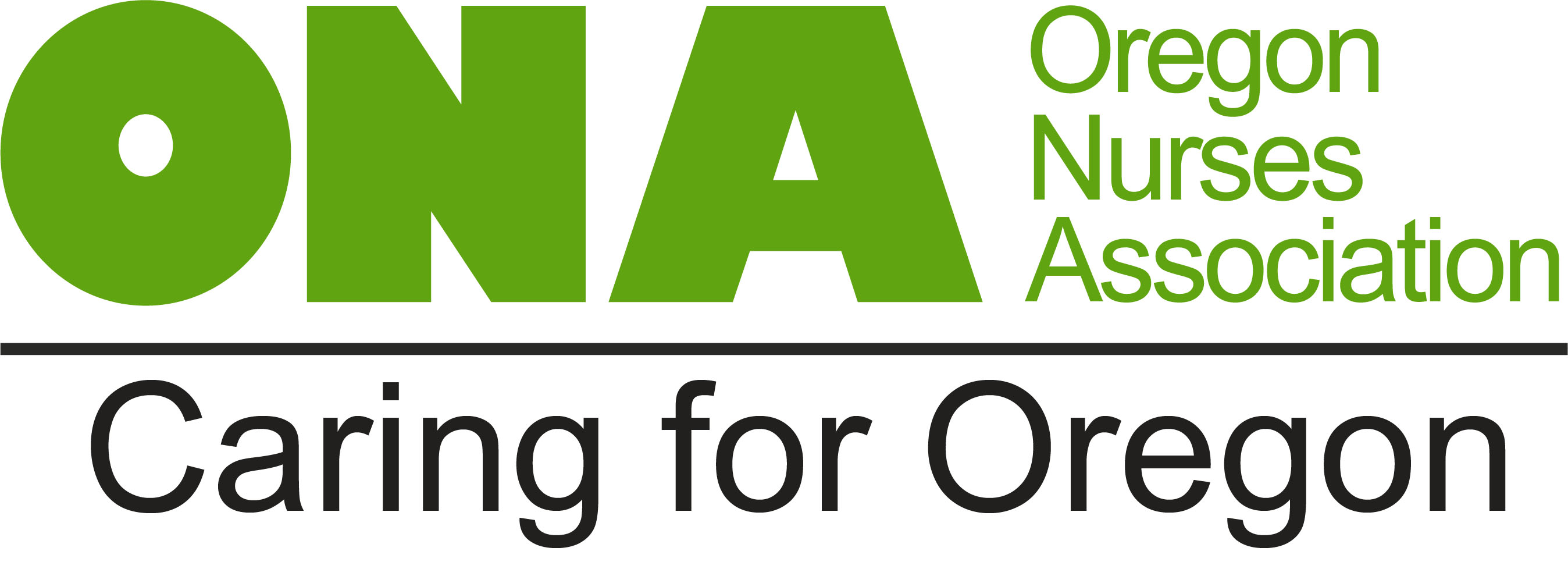Oregon Nurses Association's Statement On OHSU's "Contingency Capacity Staffing" Declaration (Photo) -05/26/22
(Portland, Ore.) - The Oregon Nurses Association (ONA) is aware that Oregon Health and Science University (OHSU) implemented “contingency capacity staffing” at 7 a.m. on May 25, 2022. OHSU has said that they “made this decision based on staffing impacts related to COVID-19, current hospital occupancy, and current emergency department demand.”
Matt Calzia, BSN, RN, Nurse Practice Consultant with ONA, said, “Oregonians, especially those in the Portland metro area, need to be aware that our premier academic medical center is operating in a crisis contingency staffing model – which means the quality of care suffers as nurses and other staff are forced to do more with less.”
Many area hospitals are being impacted by COVID-19 infections, but for OHSU, COVID-19 is not the only, or even the primary, driver of staffing problems. Staffing issues at OHSU have been months in the making as OHSU has failed to recruit new nurses, retain highly qualified staff, and maintain a contingent/travel staff workforce at appropriate levels to maintain quality patient care.
Nearly 3 years into the pandemic, and after a scathing report from former U.S. Attorney General Eric Holder’s law firm, OHSU refuses to address system-wide failures that nurses have been escalating to management for years. As a result, OHSU remains unprepared to meet the needs of our communities, let alone manage any surge in need that might result from future public health emergencies.
Chris Kish, OHSU Emergency Department Nurse, said, “These past couple of years have been the most difficult for nurses across the health care system. Now, our hospital is critically understaffed because of decisions like not retaining nurses during the pandemic and allowing traveler nurse contracts to expire. This comes as we head into Memorial Day weekend, which usually means surges in patients in the Emergency Department. What we need is more nurses, not more declarations.”
The Pediatric ICU (PICU) is also extremely short-staffed, according to nurses in that unit. Several ONA-represented nurses have left the PICU in recent weeks, and nurses who remain have indicated that staff repeatedly pick up double-time shifts out of “guilt” - not wanting to leave their patients or their coworkers in an unsafe situation. The crisis in PICU staffing has been building for months.
“OHSU management has not met their responsibility to staff these units. These staffing problems are not a result of Covid-19 alone, and they did not happen overnight,” said Calzia. “There has been a steady outflow of nurses from the PICU and OHSU has failed to retain, recruit, and improve working conditions to mitigate the risks of unsafe staffing levels. There are very few PICU beds for Oregon's sickest children and OHSU has an obligation to keep the beds staffed with nurses who feel valued, not demoralized. Declaring contingency staffing is an inadequate response to a longstanding, and growing, problem."
ONA nurse leaders at OHSU are mounting a petition drive to demand OHSU take immediate steps to remedy these failures of planning.
Specifically, ONA nurses are calling upon OHSU to explore all options to mitigate the worst impacts of these self-induced staffing challenges, including (but not limited to):
- Offer all available incentives effective immediately, including Critical Need Incentives (CNI) and Mandatory Overtime Incentives (MOV).
- Consider an additional increase to available incentives. Nurses are already working out of a desire to support their peers and their patients, but additional incentives can cover increased childcare and transportation costs or help make up for others in the household taking time away from their jobs.
- Offer retention incentives and bonuses to keep highly skilled and trained staff which, in turn, may mitigate staff deciding to leave their professions.
- Acknowledge nurses who are experiencing burnout, fatigue, and moral injury and commit to evidence-based interventions that give nurses control over their work environment.
- Provide as many support staff (CNAs, techs) as possible to alleviate duties which non-nursing personnel can perform.
- Hire all available daily agency, traveler, per diem, and Resource RNs and incorporate them into the staffing mix as soon as possible.
- Immediately hire and train less experienced nurses through a Transition to Practice (TTP) Program in specialty care areas. This won’t solve the immediate problem, but it can help avoid a return to crisis staffing in future months.
- To the greatest extent possible, divert patients to other area and regional hospitals with available beds.
- Offer incentives to nurses willing to temporarily increase their coded hours (Resource, Part-time/Full-time), including increasing FTE from .9 to 1.2 (48 hours/week).
- In specialty practice areas, reach out to staff with those skills who may now work in other units. Provide incentives for temporary redeployments (and provide meaningful backfill for nurses being redeployed back to a specialty care area).
- Relax standards for charting and documentation prior to any deviation from the staffing plan.
“Regrettably, at this point, there are no easy fixes,” said Harold Fleshman, RN, President of the OHSU Bargaining Unit. “OHSU needs to immediately redouble their efforts to stabilize staffing and articulate a long-term plan to get back to a standard of quality healthcare that this community deserves.”
Oregon Nurses Association (ONA) is the state’s largest and most influential nursing organization. We are a professional association and labor union which represents 15,000 nurses and allied health workers throughout the state. Our mission is to advocate for nursing, quality health care and healthy communities. For more information visit: www.OregonRN.org.
###

